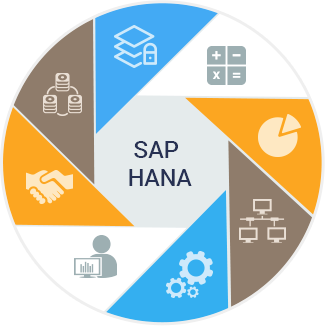SAP HANA and the revolution of in-memory technology | Part I
Welcome to our blog series on SAP HANA and the transformative power of in-memory technology. Over the coming weeks, we will be examining in detail the world of SAP HANA and the ways in which this ground-breaking technology is fundamentally changing the way organisations process and use data.
What can you expect from this series?
- Introduction to in-memory technology (you are here)
- The technical magic behind SAP HANA
- SAP HANA in action: practical applications
- Implementing SAP HANA: Challenges and best practices
- The future with SAP HANA: trends and perspectives
In each part, we will look at a specific aspect of SAP HANA, from basic concepts to forward-looking applications. This series is designed to provide valuable insights for anyone who wants to understand how in-memory technology is revolutionising the business world, regardless of their background. Whether you’re an IT professional, a business leader or simply a technology enthusiast, this series will be of interest to you.
The revolution of in-memory technology
In the rapidly evolving world of information technology, few innovations can match the profound and transformative impact of in-memory technology. At the vanguard of this revolution is SAP HANA, a robust in-memory database and application platform that has transformed the way organisations process and utilise data. In-memory technology, as the name suggests, utilises a computer’s main memory (RAM) to store and process data, rather than leaving it on slower hard drives. While this may appear to be a relatively minor technical alteration at first glance, the implications are significant. The speed at which data can be processed increases exponentially, leading to a variety of benefits, including lightning-fast analyses and real-time decision-making. SAP HANA takes in-memory technology to the next level by combining it with advanced data processing techniques and an integrated application platform. The result is a system that is not only faster, but also fundamentally changes the way organisations use their data and design their processes. This blog series will delve deeper into the world of SAP HANA, exploring how it works, the benefits it offers and how organisations are using it to stay competitive in today’s data-driven economy.
In the next part of this series, we will look at how SAP HANA works and how it differs from traditional databases.

